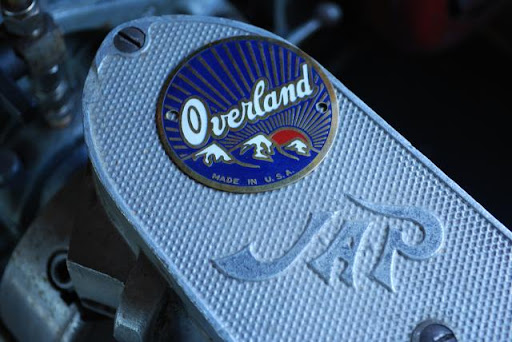So since I put quality as a buzz word in my Overland mast head I suppose it would be appropriate to provide some examples of what I see is quality. It's one of those things, like motorcycle porn, I know it when I see it!
If you have the time go here and go back in the older post for some great photos and words about a quality Trump build from Toddy. No never mind just look and read anything that comes up on his blog. You will know it when you see it.
Toddy is currently building an AJS 500 single twin port board track racer that is simply amazing. Just go and look for yourself.
The Trump that Toddy built at the RollerBurn.
Snagged this from ttp://bobbedtothebone.blogspot.com/














